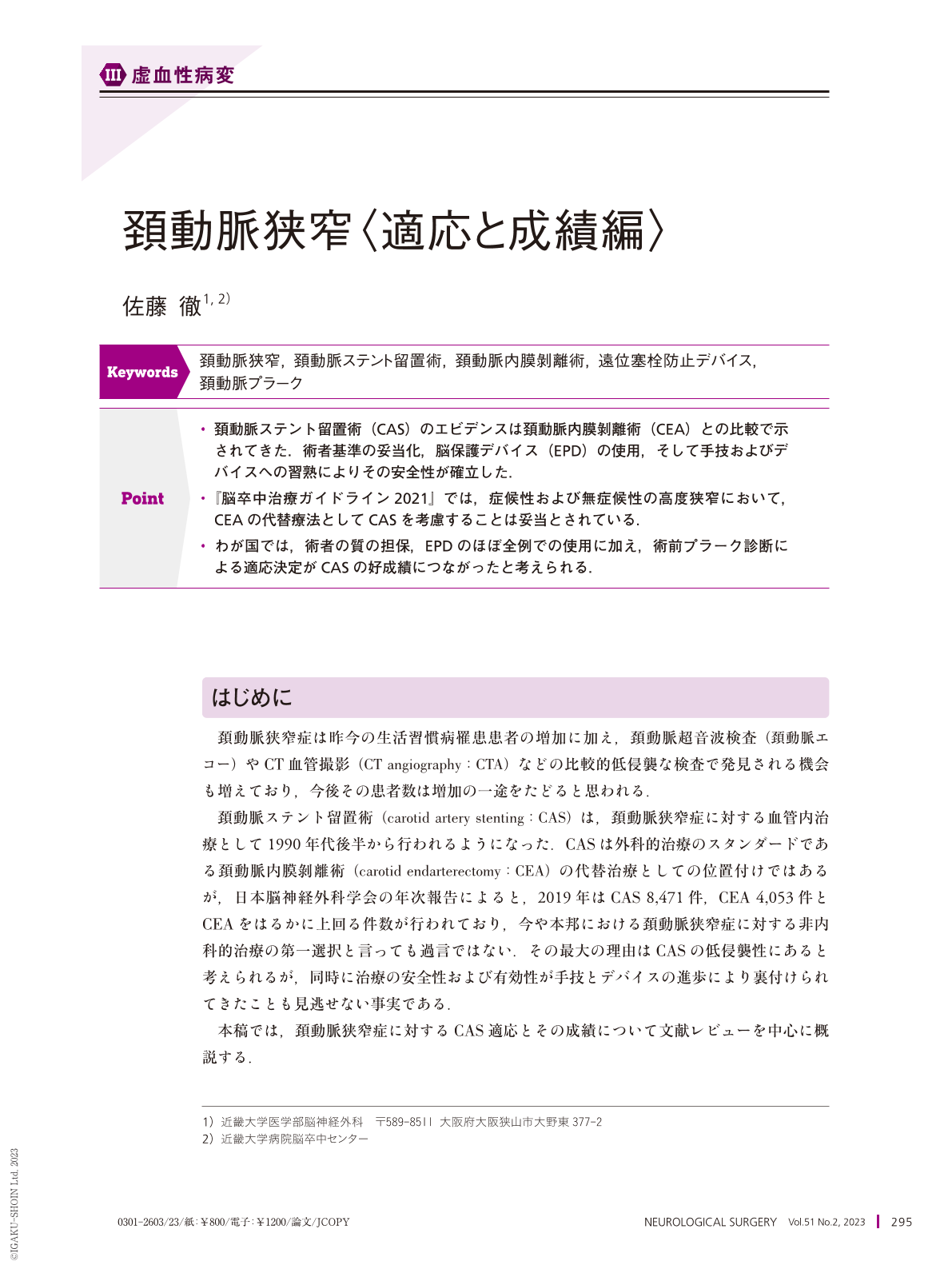Japanese
English
- 有料閲覧
- Abstract 文献概要
- 1ページ目 Look Inside
- 参考文献 Reference
Point
・頚動脈ステント留置術(CAS)のエビデンスは頚動脈内膜剝離術(CEA)との比較で示されてきた.術者基準の妥当化,脳保護デバイス(EPD)の使用,そして手技およびデバイスへの習熟によりその安全性が確立した.
・『脳卒中治療ガイドライン2021』では,症候性および無症候性の高度狭窄において,CEAの代替療法としてCASを考慮することは妥当とされている.
・わが国では,術者の質の担保,EPDのほぼ全例での使用に加え,術前プラーク診断による適応決定がCASの好成績につながったと考えられる.
Carotid artery stenting(CAS)has emerged as a less invasive alternative to carotid endarterectomy(CEA), the standard surgical treatment for carotid artery stenosis. Major international randomized control trials(RCTs)have demonstrated its non-inferiority to CEA, and it is now recommended in the Japanese stroke treatment guidelines for both symptomatic and asymptomatic severe stenotic lesions. To ensure safety, it is essential to use an embolic protection device to prevent ischemic complications and maintain the quality of physicians proficient in both techniques and devices. In Japan, these two essentials are guaranteed with the aid of a board certification system by the Japanese Society for Neuroendovascular Therapy. Furthermore, preprocedural carotid plaque evaluation using non-invasive methods such as ultrasonography and magnetic resonance imaging to detect vulnerable plaques, which are considered at high risk for embolic complications, is frequently performed, thereby determining therapeutic indications to avoid adverse events. Thus, the results of CAS in Japan are far superior to those of RCT abroad, making this procedure the first-line therapy for carotid revascularization for decades.

Copyright © 2023, Igaku-Shoin Ltd. All rights reserved.


